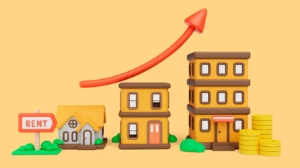
Local Housing Market Trends in Dhaka
Dhaka, the capital city of Bangladesh, is one of the fastest-growing urban centers in the world, with its housing market evolving rapidly to accommodate the growing population and changing economic landscape. From luxury high-rise apartments to affordable housing developments, the city’s real estate sector showcases a vibrant mix of challenges and opportunities. This article takes a deep dive into Dhaka’s housing market trends, analyzing the factors shaping it, key challenges, emerging opportunities, and future predictions.
Dhaka’s housing market reflects the city’s role as the economic, cultural, and political hub of Bangladesh. Over the past few decades, the demand for housing has skyrocketed, driven by rapid population growth and urbanization. This increasing demand has put significant pressure on the city’s real estate developers to innovate and cater to diverse housing needs.
Why Understanding Housing Market Trends is Crucial
For property buyers, renters, investors, and developers, understanding the trends in Dhaka’s housing market is essential. It helps them make informed decisions about where to invest, what to expect in terms of returns, and how to adapt to changing demands. Additionally, government planners and policymakers can use this knowledge to address housing shortages and improve urban living standards.
Dhaka’s Position as a Real Estate Hotspot
Among South Asian cities, Dhaka stands out as a real estate hotspot due to its strategic location, growing expatriate community, and rising foreign investments. However, the market also faces significant challenges, including overcrowding, limited land availability, and infrastructure bottlenecks. Understanding the factors influencing these trends provides a clearer picture of the city's future.
Several factors influence the housing market trends in Dhaka, ranging from socio-economic dynamics to government policies. Here’s a detailed look at these key drivers:
Dhaka’s population is estimated to grow by 3-4% annually, making it one of the world’s most densely populated cities. This rapid urbanization creates an ever-increasing demand for housing, particularly in middle-income and low-income segments. Areas like Mirpur, Mohammadpur, and Uttara have seen exponential growth in residential projects to cater to this demand.
As Bangladesh’s economy expands, Dhaka serves as the nucleus of financial growth. Rising disposable incomes have allowed a segment of the population to invest in better housing. This has led to a bifurcation in the market: one focusing on affordable housing and the other on luxury apartments.
Policies such as tax incentives for real estate developers, government-backed affordable housing projects, and urban planning initiatives like Purbachal New Town are reshaping Dhaka’s housing landscape. However, policy enforcement remains a challenge, often slowing the pace of planned developments.
Dhaka’s growing expatriate community and international business presence have boosted the demand for high-end housing. Areas like Gulshan and Banani, which offer premium residential options, remain the go-to neighborhoods for expatriates and affluent locals.
Dhaka’s housing market trends showcase a mix of modernization, affordability challenges, and innovative developments. Let’s explore the most prominent trends:
The need for affordable housing dominates Dhaka’s real estate sector. As the city’s population grows, middle- and low-income families are driving demand for budget-friendly apartments in areas like Mirpur, Banasree, and Jatrabari. Despite this, a shortage of affordable options persists due to high land prices and limited government support.
Luxury Neighborhoods: Gulshan, Banani, Baridhara
These areas are known for high-end apartments, international schools, and proximity to business hubs.
Affordable Areas: Mirpur, Uttara, Mohammadpur
These regions offer budget-friendly apartments and houses, attracting middle-income families and professionals.
High-rise apartment buildings have become the norm, especially in densely populated areas. Many of these complexes include modern amenities like gyms, swimming pools, and rooftop gardens, catering to urban lifestyles.
Luxury housing developments, such as condominiums and penthouses, are emerging in prime areas. Developers are increasingly incorporating smart home technologies and eco-friendly features to attract affluent buyers.
The rental market is a significant component of Dhaka’s housing sector, driven by students, professionals, and expatriates.
Gulshan and Banani: High-end rental properties for diplomats and expatriates.
Uttara and Dhanmondi: Mid-range rentals for professionals and families.
Mirpur and Mohammadpur: Budget-friendly options for students and workers.
The average rental cost varies widely:
Gulshan: $1,000–$5,000/month for luxury apartments.
Uttara and Dhanmondi: $400–$800/month for mid-range housing.
Mirpur: $150–$300/month for affordable apartments.
Rental prices depend on location, property condition, proximity to amenities, and demand-supply dynamics. Seasonal fluctuations also impact rates, with higher demand during academic and fiscal cycles.
While Dhaka’s housing market has grown substantially, it is not without challenges:
Land in Dhaka is among the most expensive in South Asia, pushing up property prices and limiting new developments.
Poor road connectivity, inadequate water supply, and unreliable electricity remain major issues in many residential areas.
Unregulated construction and a lack of urban planning have led to overcrowded neighborhoods, making it difficult to maintain living standards.
Despite the challenges, Dhaka’s housing market offers numerous growth opportunities:
Suburbs like Savar, Gazipur, and Narayanganj are emerging as affordable housing destinations, with better infrastructure and lower costs.
The demand for green and sustainable housing is on the rise. Developers are incorporating eco-friendly materials, solar panels, and rainwater harvesting systems in new projects.
Advances in construction technology, such as pre-fabricated materials and AI-driven project management, are improving efficiency and reducing costs.
The pandemic has had a profound impact on housing preferences and market dynamics:
Shift in Preferences: Demand for larger homes with outdoor spaces and home offices has increased.
Construction Delays: Supply chain disruptions have slowed the completion of ongoing projects.
Price Volatility: Both rental and purchase prices saw fluctuations during and after the pandemic.
Experts predict steady growth in Dhaka’s housing market, supported by urbanization and economic development. Suburban areas are expected to gain prominence, while luxury housing will continue to attract affluent buyers.
Dhaka’s housing market is a reflection of its vibrant economy and growing population. While challenges like high land prices and infrastructure issues persist, the opportunities for growth, innovation, and investment are immense. For buyers, renters, and investors, understanding these trends is key to navigating this dynamic market successfully.